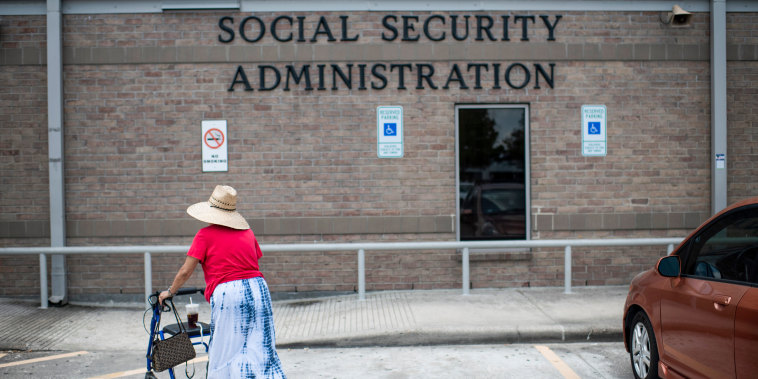The trust funds the Social Security Administration relies on to pay benefits are now projected to run out in 2035, one year later than previously projected, according to the annual trustees’ report released on Monday.
At the projected depletion date, 83% of benefits will be payable if Congress does not act sooner to prevent that shortfall.
The Social Security trustees credited the slightly improved outlook to more people contributing to the program amid a strong economy, low unemployment and higher job and wage growth. Last year, the trustees projected the program’s funds would last through 2034, when 80% of benefits would be payable.
“This year’s report is a measure of good news for the millions of Americans who depend on Social Security, including the roughly 50% of seniors for whom Social Security is the difference between poverty and living in dignity — any potential benefit reduction event has been pushed off from 2034 to 2035,” Social Security Commissioner Martin O’Malley said in a statement.
O’Malley, who was sworn in to lead the agency in December, also urged Congress to extend the trust fund’s solvency “as it did in the past on a bipartisan basis.”
“Eliminating the shortfall will bring peace of mind to Social Security’s 70 million-plus beneficiaries, the 180 million workers and their families who contribute to Social Security, and the entire nation,” O’Malley said.
Social Security’s new 2035 depletion date applies to its combined trust funds.
The trust funds help pay for benefits when more money is needed beyond what is coming in through payroll taxes. Currently, 6.2% of workers’ pay is taxed for Social Security, while an additional 1.45% is taxed for Medicare. The total 7.65% is typically matched by employers. High earners may have an additional 0.9% withheld for Medicare.
While the combined depletion date for Social Security’s trust funds is typically used to gauge the program’s solvency, the funds cannot actually be combined based on current law.
Social Security’s two trust funds have distinct projected depletion dates.
The fund used to pay retired workers, their spouses and children, and survivors — formally known as the Old-Age and Survivors Insurance Trust Fund — is projected to last until 2033, which is unchanged from last year. At that time, 79% of those scheduled benefits may be payable.
The fund used to pay disabled benefits — known as the Disability Insurance Trust Fund — will be able to pay full benefits until at least 2098, the last year of the projection period.
Medicare solvency is typically measured by the ability of the trust fund to make up for a shortfall in payroll taxes used to fund Part A hospital insurance.
The Medicare Hospital Insurance trust fund — used to fund Part A benefits — saw the biggest improvement in this year’s trustees report. Its depletion date is now pushed to 2036 — five years later than was projected last year — due in part to higher payroll tax income and lower than projected 2023 expenditures.
At that time, 89% of scheduled benefits may be payable.
Medicare’s Supplemental Medical Insurance Trust Fund — which covers voluntary Part B coverage for physician services and medical supplies and Part D prescription drug coverage — is financed for the indefinite future, since it relies on beneficiary premiums and Treasury Department contributions that are automatically adjusted each year.
While the new projected depletion dates show lawmakers have slightly more wiggle room, experts say the solvency of both Social Security and Medicare should be addressed sooner rather than later.
For the AARP, the issue is a top concern for members ages 50 and up, said Bill Sweeney, the organization’s senior vice president of government affairs. About 40% of families who are 65 and older rely on Social Security for at least half of their income, and about 20% of families rely on it for all of their income, he said.
For any reductions to be on the horizon for Social Security benefits, or for that to even be talked about, is “really scary for people,” Sweeney said.
“Congress has a responsibility to sit down and work this out in a bipartisan way,” Sweeney said. “And the sooner they do it, the better.”
The new projected depletion dates put Social Security and Medicare on a more similar timeline than previous estimates. That may offer the opportunity for a unified one-step reform for the programs, he suggested.





























